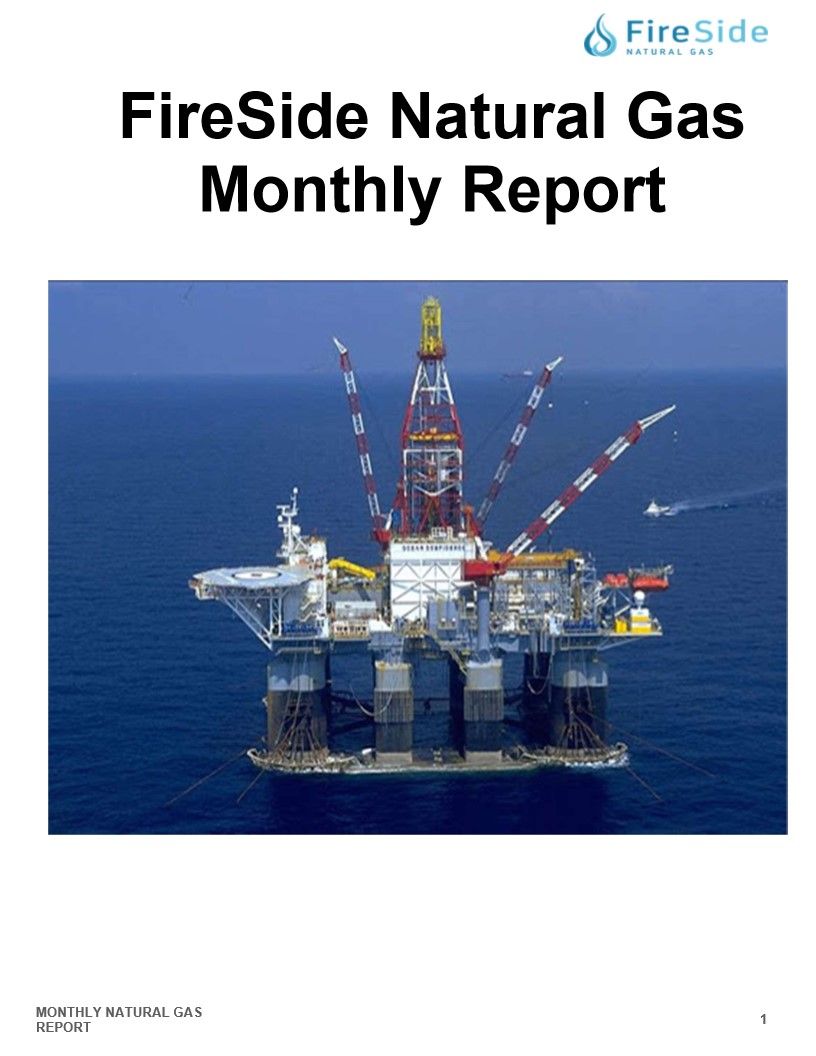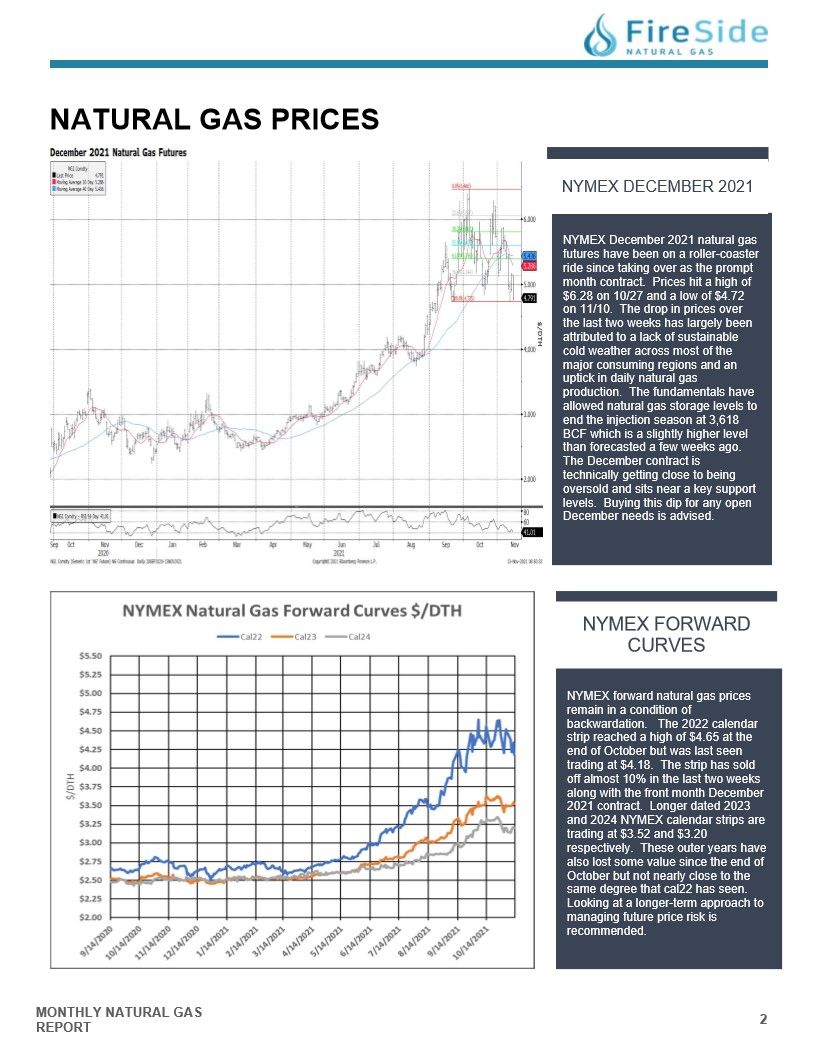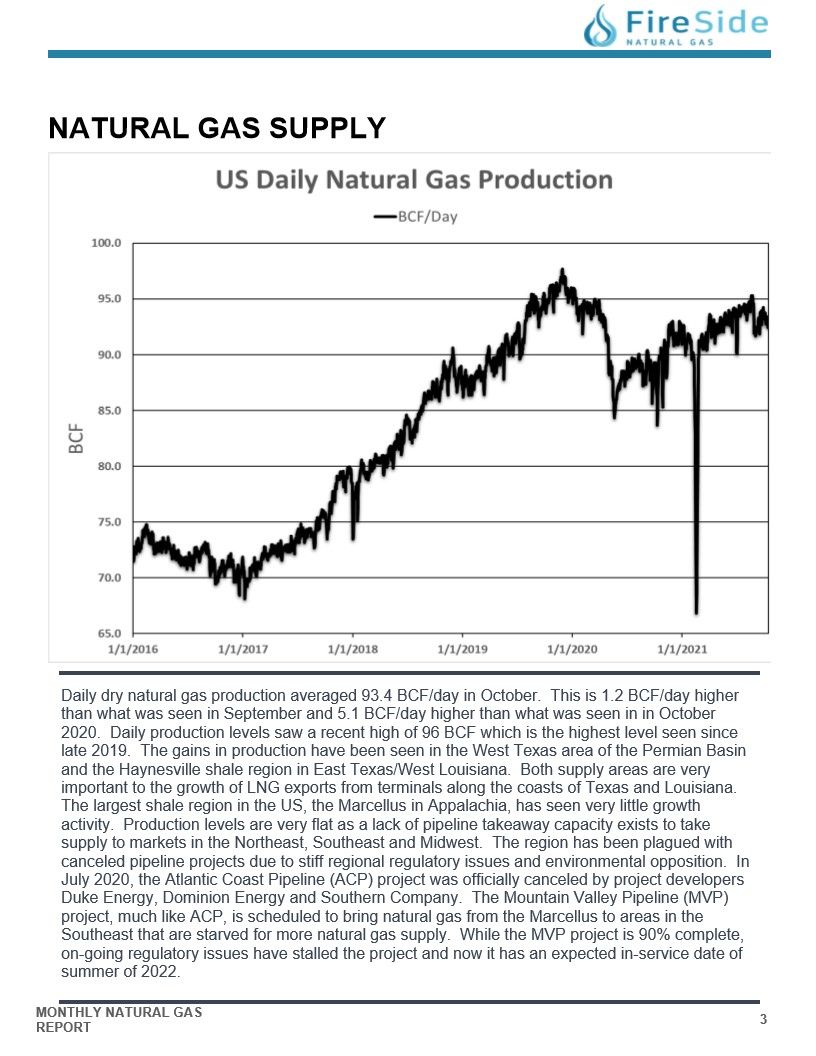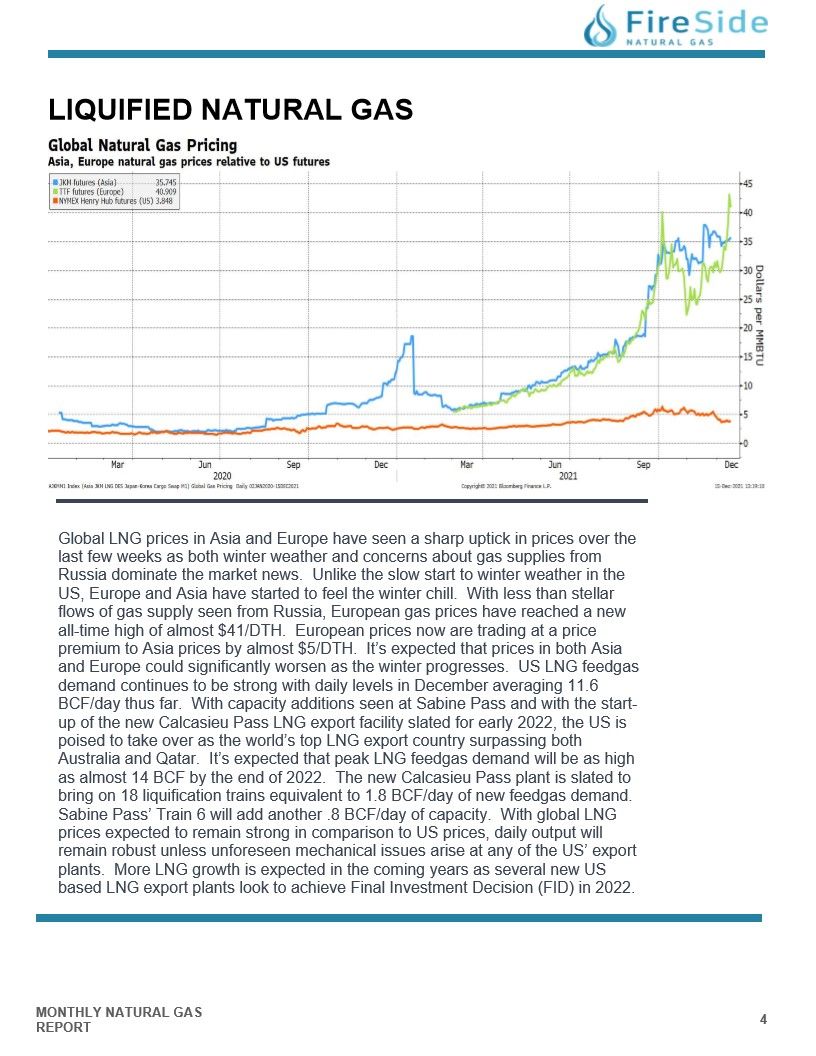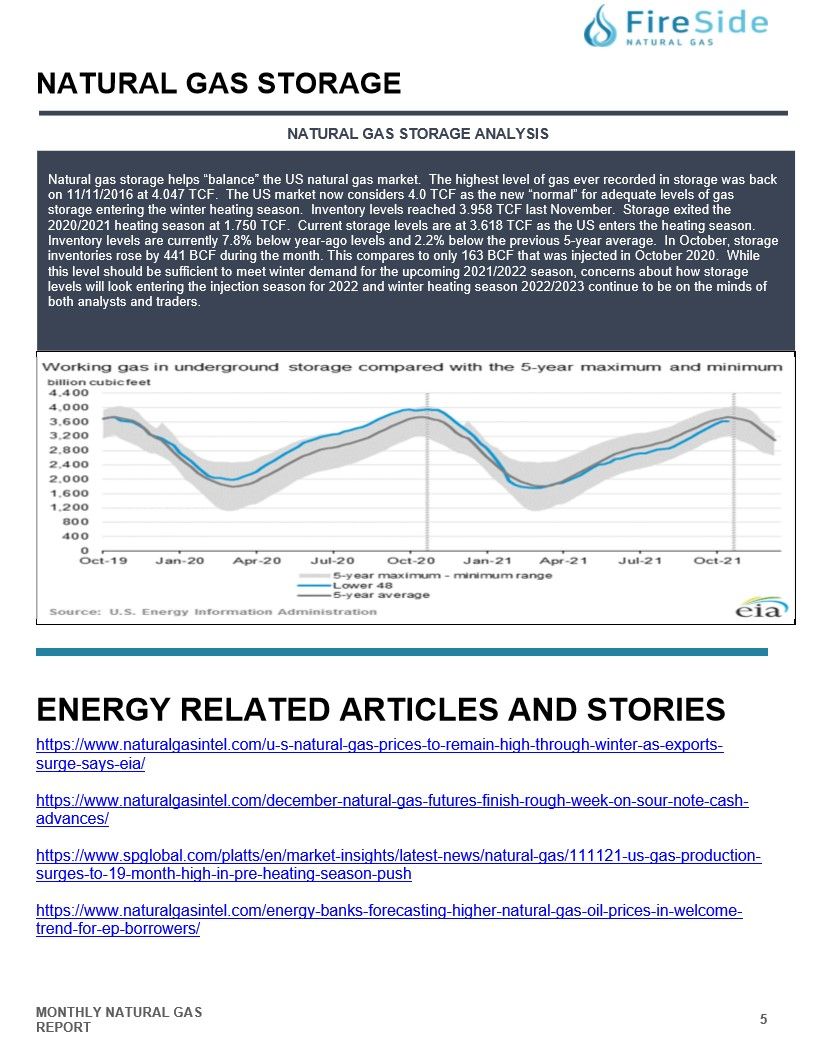The Monthly Natural Gas Market Newsletter - November 2021
FireSide Natural Gas
Monthly Report
Natural Gas Prices
NYMEX DECEMBER 2021
NYMEX December 2021 natural gas
futures have been on a roller-coaster
ride since taking over as the prompt
month contract. Prices hit a high of
$6.28 on 10/27 and a low of $4.72
on 11/10. The drop in prices over
the last two weeks has largely been
attributed to a lack of sustainable
cold weather across most of the
major consuming regions and an
uptick in daily natural gas
production. The fundamentals have
allowed natural gas storage levels to
end the injection season at 3,618
BCF which is a slightly higher level
than forecasted a few weeks ago.
The December contract is
technically getting close to being
oversold and sits near a key support
levels. Buying this dip for any open
December needs is advised.
NYMEX FORWARD CURVES
NYMEX forward natural gas prices
remain in a condition of
backwardation. The 2022 calendar
strip reached a high of $4.65 at the
end of October but was last seen
trading at $4.18. The strip has sold
off almost 10% in the last two weeks
along with the front month December
2021 contract. Longer dated 2023
and 2024 NYMEX calendar strips are
trading at $3.52 and $3.20
respectively. These outer years have
also lost some value since the end of
October but not nearly close to the
same degree that cal22 has seen.
Looking at a longer-term approach to
managing future price risk is
recommended.
NATURAL GAS SUPPLY - US PRODUCTION
Daily dry natural gas production averaged 93.4 BCF/day in October. This is 1.2 BCF/day higher
than what was seen in September and 5.1 BCF/day higher than what was seen in in October
2020. Daily production levels saw a recent high of 96 BCF which is the highest level seen since
late 2019. The gains in production have been seen in the West Texas area of the Permian Basin
and the Haynesville shale region in East Texas/West Louisiana. Both supply areas are very
important to the growth of LNG exports from terminals along the coasts of Texas and Louisiana.
The largest shale region in the US, the Marcellus in Appalachia, has seen very little growth
activity. Production levels are very flat as a lack of pipeline takeaway capacity exists to take
supply to markets in the Northeast, Southeast and Midwest. The region has been plagued with
canceled pipeline projects due to stiff regional regulatory issues and environmental opposition. In
July 2020, the Atlantic Coast Pipeline (ACP) project was officially canceled by project developers
Duke Energy, Dominion Energy and Southern Company. The Mountain Valley Pipeline (MVP)
project, much like ACP, is scheduled to bring natural gas from the Marcellus to areas in the
Southeast that are starved for more natural gas supply. While the MVP project is 90% complete,
on-going regulatory issues have stalled the project and now it has an expected in-service date of
summer of 2022.
LIQUIFIED NATURAL GAS - GLOBAL PRICING
Global LNG prices in Asia and Europe remain elevated against domestic natural gas
pricing in the US. Prices in Europe have improved over the last few weeks as
Russia as agreed to export more natural gas to European countries, but prices
remain historically high heading into the peak winter heating season. Natural gas
storage levels in Europe were depleted after an extremely cold winter last year.
European storage levels remain dangerously low and depending on weather, pricing
could return to the $40/DTH level. LNG prices in Asia have lost gains over the last
few weeks as well. They remain more expensive than what's seen in Europe, at an
equivalent $31/DTH, and demand for LNG in Asia is expected to remain robust this
winter as well. LNG exports from the US should stay strong considering the price
spreads currently seen. LNG feedgas demand recently set a record high of 11.5
BCF/day. The Calcasieu Pass facility will be the newest US export terminal to
become operational in 2022. The facility has recently received FERC approval to
start accepting feedgas to produce LNG. Daily natural gas nominations to the plant
have been slowly increasing and should start to ramp-up further soon in the coming
weeks. Sabine Pass' Train 6 is also slated to become operational soon. With both
the increase in export capacity from Sabine Pass and Calcasieu Pass, record LNG
exports for the US will be seen in 2022.
NATURAL GAS STORAGE ANALYSIS
Natural gas storage helps "balance" the US natural gas market. The highest level of gas ever recorded in storage was back
on 11/11/2016 at 4.047 TCF. The US market now considers 4.0 TCF as the new "normal" for adequate levels of gas
storage entering the winter heating season. Inventory levels reached 3.958 TCF last November. Storage exited the
2020/2021 heating season at 1.750 TCF. Current storage levels are at 3.618 TCF as the US enters the heating season.
Inventory levels are currently 7.8% below year-ago levels and 2.2% below the previous 5-year average. In October, storage
inventories rose by 441 BCF during the month. This compares to only 163 BCF that was injected in October 2020. While
this level should be sufficient to meet winter demand for the upcoming 2021/2022 season, concerns about how storage
levels will look entering the injection season for 2022 and winter heating season 2022/2023 continue to be on the minds of
both analysts and traders.
ENERGY RELATED ARTICLES AND STORIES
